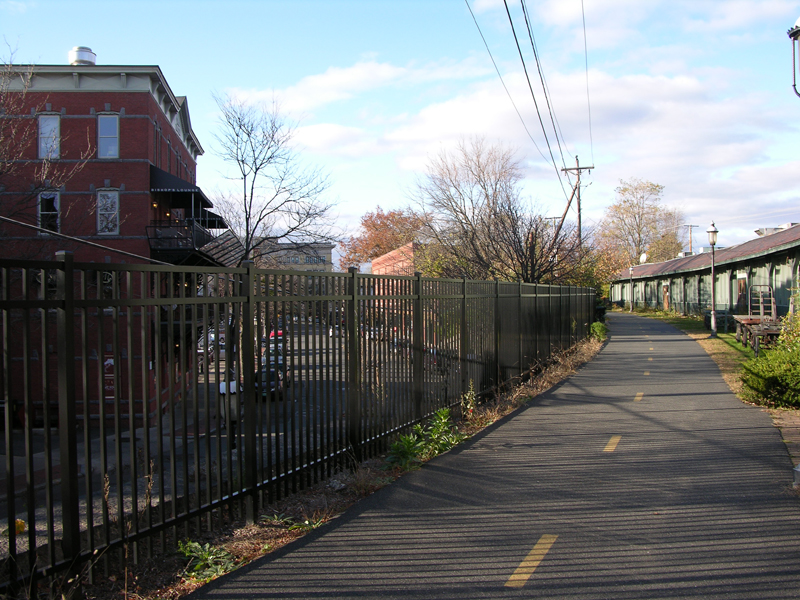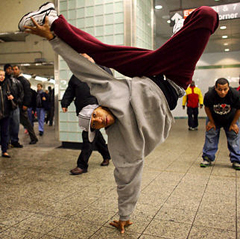The Creation of Breaking, Popping and Locking
B-boying or Breaking originated in the Bronx, New York in the 1970's. Dancers learned their steps while listening to break beats. Disc Jockeys like DJ Kool Herc took the rhythmic break downs of dance and funk records and made their own songs. They looped these break downs continuously to form a Hip Hop song.
Breaking was invented by Richard "Crazy Legs" Colon and Ken "Swift" Gabbert. They are members of the Rock Steady Crew, Bronx, New York. The elements of Breaking include the toprock, downrock, power moves and freezes.
Toprock is an array of steps that the B-boy/B-girl executes while standing. Dancers are pushed to develop a highly personal style of toprock that they can feel comfortable with.
Downrock is classified as any dance steps made with the support of the hands against the floor. This enabled dancers to balance themselves while performing quick steps in a crouched position.
Power moves are acrobatic maneuvers that show the physical speed and agility of the dancer. They include windmills, flares, head spins and handstands.
Freezes can be an ending move to a session of downrock. The dancer balances in a unique position with their hands against the floor. This move highlights both the dancer's strength and focus.
Popping
Popping came about in the 1960's and 70's in California. It is a funk style of dance. Popping has been used as a term that encompasses many related styles of dance. These include body waves, robotics and King Tutting. Popping got its name from the movement a dancer makes by contracting or popping the muscles in their body. They move in sync with the music being played. The dancer's legs can perform a "float" or "glide" which gives the illusion that the dancer is sliding along the surface of hidden ice. Michael Jackson's moonwalk is an example of a glide.
Locking
Locking dance is a funk style invented by Don Campbell in the late 1960's. It is characterized by fast movement and then locking or freezing parts of the body in place. Distinct arm and hand movements are precisely timed to the beat of the Hip Hop music. The legs and hips can be more relaxed, emphasizing the actions of the upper body.
Boogaloo
Popping and Locking were influenced by the Boogaloo dance of the 1950's and 60's. This style blended aspects of Cuban, Puerto Rican and African American dances at that time. It is a loose, fluid style that seems very animated, almost like a cartoon character doing a jig. The Boogaloo used "isolation" of the body. This was accomplished by enacting moves like locking the legs and hips in place while the upper body continues to move. The dancer's limbs were shifted into different positions and angles. This created a distinctive visual display that was exciting to see.
Competition
Breaking, Popping and Locking introduced the world to Hip Hop dance. Dancers formed dance groups or "crews". They practiced individual steps and group routines. When crews reached a certain skill level they chose to compete with or "battle" other crews. Their goal was to gain a greater reputation in their community. Large-scale battles were held at city parks. Battles occurred in "cyphers" or a circular layout of people.
Crews competed for 1st place and bragging rights for their block. They would be known as the best in the neighborhood or even the best in the city. Turf, Krump, and Jerk dance came about after Breaking and Popping were established. Turf, centered in Oakland, California, blends elements of Breaking and Popping. It includes body waves and robotics/isolation from Popping. The arm movements of Locking were taken and further developed. Turf's downrock was influenced by Breaking. Turf dancers used this influence to create their own approach.




